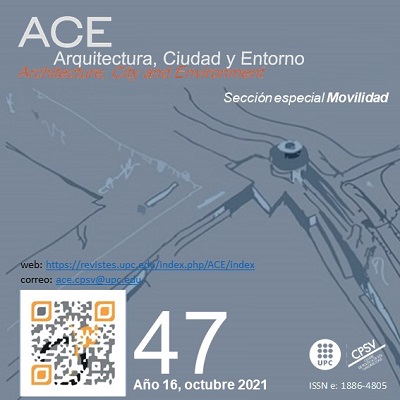Luis Barragán’s Criticism Towards the Publicity of Modern Life and his Vision Concerning the Spirituality of Art Embodied in his Architectural Work: 1940-1980
DOI:
https://doi.org/10.5821/ace.16.47.9501Keywords:
Existentialism, angst, Mexican modern architectureAbstract
The Architecture developed by Luis Barragán from the 1950’s is one the most truthful architectonic expressions to those evidences that marked the beginning of an inclination which questioned the International Style Architecture’s orthodox postulates in México. The next article unveils some of the theoretical-philosophical postulates from which Barragán criticized modern times and the ethical-esthetical precepts embodied in his architectural work during that moment. The present research work developed at Fundación Tapatía de Arquitectura Luis Barragán started with a descriptive analysis of Luis Barragán’s principal books’ collections and magazines. This analysis allowed selecting four books whose authors Barragán frequented on several occasions. Afterwards, transcripts of interviews done to Barragan, especially those realized between 1939 and 1976, were reviewed. The analysis of all these sources allowed to detect a relation between the publicity of modern life – a concept Barragán took from the Spanish philosopher José Gaos several times in his interviews- and the multiple theoretical-philosophical ideas that Barragán highlighted in his books read about the prevalence of public life over the private one and about angst. In addition, concepts mentioned by these authors matched with the idea of the spiritual role of arts and its relevance at that historical moment. This article exposes all these contents and traces conclusions about some hypothetical biographical-intellectual routes which were embodied in certain spatial qualities of Luis Barragán’s work since 1950’s.
Downloads
Published
Issue
Section
License
| INTELECTUAL PROTECTION CRITERIA |
At this moment, it is count with the "Oficina Española de Patentes y Marcas", while global protection it is being processed by the World Intelectual Property Organization (OMPI/WIPO). Nevertheless the International Standard Serial Number Office (ISSN) has given the following numbers ISSN: 1886-4805 (electronic version) and 1887-7052 (paper version). All articles will be peer reviewed, using double blind reviewing. |
| COPYRIGHT |
The article contents and their comments are authors exclusive liability, and do not reflect necessarily the journal editor commitee's opinion. All ACE published works are subject to the following licence CC BY-NC-ND 3.0 ES http://creativecommons.org/licenses/by-nc-nd/3.0/es/ It implies that authors do not hold nor retain the copyright without restrictions but only those included in the licence. |





































